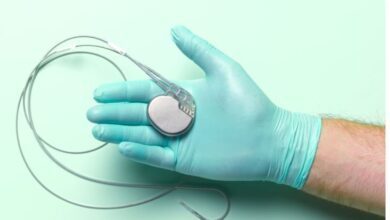THE WATCHMAN PROCEDURE

I’m starting this post “right off the bat” with my opinion. “If it ain’t broke, don’t fix it.” That’s a good adage to live by because how many times do we mess with something that’s working fine only to make it not work right. It‘s Murphy’s Law—If something can go wrong, it will.
That’s how I feel about the Watchman procedure.
This invasive procedure is done to “reduce stroke risk” in adults with atrial fibrillation who either cannot, or will not, take a blood thinner. The Watchman device has been around for 20 years, and on their website the manufacturer, Boston Scientific, says 600,000 patients have had the procedure.
Astute cardiologists have discovered that most strokes occurring as a result of atrial fib are embolic meaning they are caused by blood clots that form within the heart, break loose, and flow to the brain. Cardiologists also astutely discovered these emboli (loose clots) form in a small pocket of the left atrium called the left atrial appendage (LAA). Blood flow through the LAA is very slow and sluggish so during episodes of A Fib, clots form easily. Strokes occurring as I mentioned above are a devastating consequence of this situation.
For years, the preventive treatment of choice was the oral anticoagulant warfarin. It worked well but required the patient to have monthly INR blood tests to monitor the level of anticoagulation. Patients often had bleeding problems with warfarin or didn’t have an INR done often enough.
Another solution to the problem was surgical excision of the left atrial appendage. If patients had no place for blood to pool (in the LAA), clots would not form, and strokes would not occur. This is a major procedure that is not often done. Complications can be a problem.
Finally, researchers invented the Watchman device. It is a small “metal frame with a fabric coating” that is placed in the left atrial appendage to completely close the appendage shutting off blood flow into it. It is done during a heart catheterization. The device is fed through a tube placed in the femoral artery in the groin upward into the left atrium. After the watchman is inserted in the LAA, it is opened up like an umbrella blocking blood coming into and out of the LAA. Over time, the Watchman is covered by tissue growth and becomes a part of the atrium. After placement, Patients are able to go off of warfarin.
The Watchman procedure has been offered to me on several occasions. I’m a patient with infrequent episodes of A Fib, who takes Warfarin, and does home INR monitoring. My INR Is always good, and I’ve had no bleeding complications. “I ain’t broke” so I don’t think I need “fixin’” with a Watchman procedure. Other patients who have had the Watchman procedure are satisfied with the results and are happy to be off warfarin. But as long as warfarin works for me I’ll be fine as I am.
Reference: google.com The Warchman Procedure.
watchman.com The Watchman Procedure





What are the complications and risks, and their frequency for this procedure?
Thanks,
J